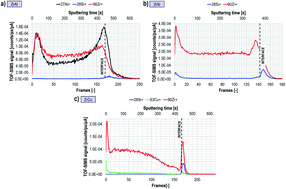The matrix effect in TOF-SIMS analysis of two-element inorganic thin films
Abstract
The matrix effect, i.e. the dependence of element ion yield on the surrounding chemical state, is very often considered as a negative and limiting factor in elemental characterization. In fact, it is the main reason making Time-of-Flight Secondary Ion Mass Spectrometry (TOF-SIMS) a non-quantitative technique as element ionization efficiency can span over several orders of magnitude depending on the matrix. Despite that, even small chemical variations of an experimental setup can cause interpretation of TOF-SIMS depth profiles a challenging task. However, the sensitivity of element ionization to the neighboring atoms can also be very beneficial as ion yields can be enhanced in the presence of particular species such as oxygen, cesium, water and fluorine. In this work, we make an attempt to estimate the matrix effect in two-element Zr-containing alloys using TOF-SIMS. The Zr ionization efficiency as well as its response to the surface and interface contaminants was investigated depending on Al, Si and Cu matrices. It was observed that Zr ionization efficiency is over four times higher in the Si matrix than in the Cu matrix and over two times higher when compared to the results obtained in the Al matrix.



 Please wait while we load your content...
Please wait while we load your content...